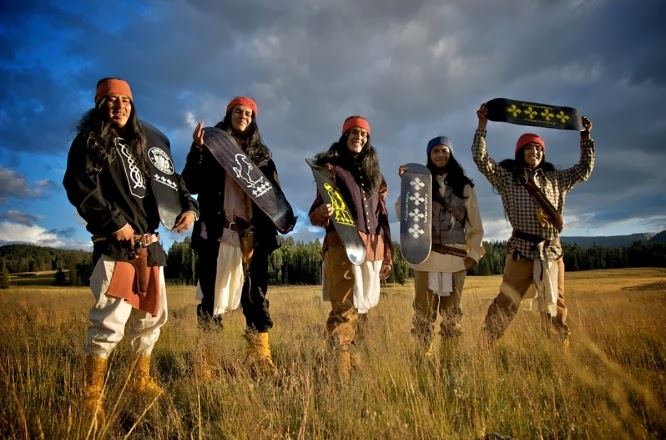A few weeks ago
I had the good fortune to lecture to a large group of students and then rotate
among smaller sections of students as they responded to questions about the
material from their teacher. This
has become my favorite way of roving as it gives me an opportunity to speak to
many students but also to speak with students individually about what they took
from what I shared.
This
particular afternoon found me chatting with a young lady who began our
conversation earnestly.
“The noble
savage myth,” she said, “I thought that’s what Native Americans were really
like.”
“That’s ok,” I
said, “That’s what a lot of people think.
That’s why it’s a stereotype.”
(With a lot more time and regular meetings with students, I would be tempted to further the conversation with this fascinating video of White Mountain Apache skateboarders, part of a collaborative exhibition by the Phoenix Heard Museum and the Smithsonian National Museum of the American Indian in 2007-2008. But there's no crueler taskmaster than the clock in the classroom. I did not digress.)
“But if Native
Americans are not one with nature,” she said, “what are their spiritual
beliefs?”
“Well nature is
important in a lot of Native American religions,” I said, “And a lot of native
people practice their traditional religions, but some see the references to
nature in their cosmology as metaphors.
Some practice their religion and Christianity at the same time, and they
don’t see any conflict between the two.
Anthropologists have a fancy word for it: They all it syncretism.”
“Syncre…” She
stumbles.
“Syncretism,” I say and write the word down.
“Oh!” She
says. “Two things coming
together.”
“Yes!” I say.
Now she is
comfortable, and I am excited. This is a good student!
“But what about origin stories?” She asks. “How do they explain the world?”
“Well, like I
said, all native people are different and have different beliefs, but there are
origin myths.” I continue with
stories about Raven and the Salmon People drawn from my recent reading of
Lissa Wadewitz’s The Nature of Borders. I mention the Navajo figure, Spider
Woman. I describe the place of
emergence in Pueblo cosmology, the sipapu.
“Are these
stories written down?” She asks.
“Well,” I say,
“When Europeans first met Native Americans, stories like these were part of
oral tradition. But now many are
written down.”
“So I could read
them?” She asks and her eyes glance toward the window in the direction, I
think, of the University of Oslo.
“Sure!” I say.
“Do they have a
central text?” She asks, “Like the Bible or the Koran?”
“Well,” I
say. (I make a mental note to begin
a reply with another word.)
“Sometimes
certain places have moral lessons or meanings attached to them.” I am thinking of Keith Basso’s Wisdom Sits in Places.
“Young people
learn stories about a mountain and then, whenever they see that mountain, they
remember that they should respect their elders. Or a particular cluster of trees might remind you to share
or a farming plot could remind you to be grateful for what you have.”
Her eyes dart
back to the window. I am less sure
this time around that her glance means she is desperate to get to the library
and learn more. Am I losing my curious and intelligent audience of one? Does she think I have forgotten her
question?
“And so,” I say.
No, my timing is
right. Her glance is back.
“It is as if the
land is a text.”
Her brown eyes
grow wide and round.
“Wow.” She says.
“I know.” I say.
The Black River, which forms the border between the White Mountain Apache Reservation and the San Carlos Apache Reservation. Photo by US Bureau of Reclamation


